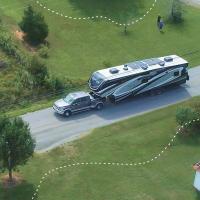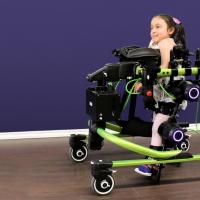Logistics systems are complicated, and last mile logistics especially so. Getting what people need to where they need it, as quickly, environmentally-friendly, and equitably as possible will require transforming the way that goods currently move.
Innovation is beginning to transform last mile logistics, where rapid delivery otherwise relies on a person driving a gas-powered car one order at a time, if it’s offered at all. At the current rate, studies suggest the number of vehicles doing last-mile delivery in major cities will increase by 36% by the end of the decade, with a similar increase in congestion and greenhouse gas emissions.
Zipline’s mission is to solve these extraordinarily complex obstacles to creating a fast, electric logistics system that serves everyone.
Zipline uses autonomy and robotics to create a new form of delivery that is fast, clean, and equitable.
Serving tens of millions of people around the world, Zipline’s instant logistics service is the most extensive automated delivery system in the world, moving everything from COVID-19 vaccines to Walmart orders on the wing.
“A lot of people look at what Zipline does and assume it’s total science fiction, and it’s a decade away” says Keller Rinaudo, Zipline co-founder and CEO.
But that future is already here, the tangible proof in the millions of products already delivered.
Transforming Last Mile Logistics for Everyone
“The idea is simple,” says Rinaudo. “The technology required to do it is complicated.”
That idea is to make instant delivery scalable so that it can serve every person on Earth — on demand delivery no matter who (a Walmart customer in Pea Ridge Arkansas), or where (a health clinic in northeastern Ghana), you are. To accomplish such an ambitious goal, Zipline uses small, autonomous electric vehicles.
But the technology of instant logistics goes far beyond the autonomous aircraft themselves — although the Zips, with their white fuselages and rocket red-orange wings, make for a striking example of what adaptable last mile logistics can look like.
It is the infrastructure needed to keep those Zips in the skies and the packages in their bellies on time which may change how we think about delivering goods. Unmanned traffic management systems combine with weather forecasting and state-of-the-art sensor suites to ensure Zips get to their destinations safely, drop their packages accurately, and return safely, ready to fly again. On the ground, warehousing and fulfillment technology ensures that those drops are the right thing, at the right place, at the right time.
Zipline’s instant logistics system is designed to be scalable, operate 24/7 in any environment, and perform at the highest standards of safety and reliability.
Afterall, health systems depend on the system for everything from routine to emergency deliveries.
Moving to electric instant logistics means decarbonizing delivery; the efficiencies of scale of the global freight supply chain, moving massive amounts of goods via ships or trains, break down when last mile logistics come into play, necessitating fleets of cars, trucks, and vans. Getting food or a prescription medicine delivered to your door on demand generally involves a person driving a 3,000 pound internal combustion vehicle to your door and then idling around waiting for the next order. In right-sizing, automating, and electrifying this final step, instant logistics could decrease the carbon footprint of delivery and ease road congestion — and change how we think about how we make use of the space around us.
“The idea that we wouldn’t need as many roads in order to transport goods back and forth, in order to make sure people still had access to the things they needed, but we can instead use that ground to live? What a novel idea,” Okeoma Moronu, Zipline aviation and regulatory lead, says.
Moving the Future
Any Zipline partner can pull out their phone and request autonomous, instant delivery of whatever they need. The Zips are capable of handling 100% of medical supplies — crucial to providing lifesaving material to rural areas — and the vast majority of the types of goods which we order every day online.
This system is already deployed at scale. At any given moment, dozens of Zips fly the skies, across a global logistics network which already reaches 25 million people in its service territory. Every four minutes, someone receives a Zipline delivery.
That includes taking delivery of life-saving medical supplies. From a network of distribution centers Zipline uses instant logistics to deliver blood supplies, medicines, and vaccines — including COVID-19 vaccines — to thousands of healthcare facilities.
In Ghana, Zipline is a core piece of the healthcare supply chain. “Across the country, we serve 1,600-plus health facilities,” says Samuel Akuffo, Zipline’s Ghana operations lead.
On demand delivery is crucial, because it is difficult for rural healthcare facilities to store items on site, says Naa Adorkor Yawson, Zipline Ghana’s General Manager. Because of the speed and flexibility of Zipline’s instant logistics, the supply chain can respond quickly to what is happening in the field — an ability always needed for medicine, and made all the more critical by a widespread, fast-moving pandemic.
The number of people benefiting from that kind of nimble response is due to expand, as partners around the world, including health systems, governments, and leading global brands, buy into Zipline’s vision of what instant logistics can mean at scale. That includes Walmart, which is currently using instant logistics to fulfill deliveries in its home state of Arkansas.
“If it’s the middle of the night, you need a thermometer, you need diapers, whatever it might be, technologies like this could solve that problem for customers,” says Tom Ward, executive vice president and chief ecommerce officer of Walmart.
“But what if it could land on the driveway in ten minutes? It would completely transform the way you think about the items you want, and the life you want to lead.”
The demand is already there, Ward points out, and we have the stuff. The challenge lies in closing that gap, no matter where it is.
Instant logistics could allow you to lead your life wherever you choose, without having to pay a price in how long it takes items.
“You don’t realize how convenient your life has become because you have access,” Moronu says.
And access is, in the end, what instant logistics is about. The technology is in the skies now, the ability to bring a decarbonized, agile, distribution system for everyone no longer science fiction — although it may feel like it.
“We want to build that magical, simple experience that approximates teleportation,” Rinaudo says.


